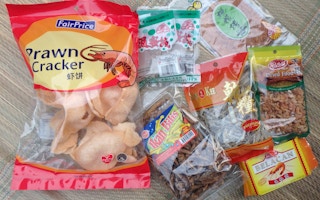June 5 of this year was a monumental day for Singapore on two fronts. Not only did Singapore celebrate the 10th anniversary of the Singapore Packaging Agreement (SPA), but a mandatory reporting of packaging data and waste reduction plan was also announced. This calls for celebration as the National Environment Agency (NEA)— the governmental body heading SPA—is making clear progress in moving “Towards a Zero Waste Nation”.
The SPA was signed between NEA, industry associations, individual companies and NGOs with the primary goal of reducing packaging waste. Signed in 2007, the SPA today has 197 signatories, including industry groups like the Food Industry Asia, and the Trade & Industry Association (Singapore). Amongst its signatories are also multi-billion fast-moving consumer goods (FMCG) companies such as Unilever and Coca-Cola, and commercial building owners and managers including Marina Bay Sands and Siloso Beach Resort.
The two main objective of the SPA are to 1) Reduce waste from product packaging, and 2) Raise awareness and educate consumers on reducing waste. Assessing their signatories in making “notable efforts and achievements in reducing packaging waste”, NEA celebrates best case practices by its signatories in the Singapore Packaging Agreement Awards (previously known as the 3R Packaging Awards).
In the 2017 Singapore Packaging Agreement Awards, Nestle Singapore bagged the 10th Anniversary Special Achievement Award and the Top Achievement Award (MNC) for “their consistent and outstanding performance in reducing packaging waste”, with Unilever Singapore bringing home the Merit Award. These are only two of the 16 MNCs and SMEs that were presented with the SPA Awards this year.
While the SPA and its resulting Awards signify industry-wide commitment in reducing waste, it is still in its infancy stages. In his foreword at the 2016 Awards, Chairman of the Singapore Packaging Agreement Governing Board, Ong Lye Huat, agrees that “there is still much room for improvement in terms of broadening industry participation and garnering greater commitment by businesses in reducing packaging waste”.
1. Quantifying SPA vision and goals
NEA acknowledges that Singapore “needs to curb the generation of packaging waste at (its) source”. In 2016, approximately 1.66 million tonnes of waste was disposed of by the domestic sector, and one-third of that comes from packaging waste. That is 553,000 tonnes of packaging waste that would snugly fit more than 1,000 Olympic-size swimming pools.
Dissecting the SPA Award Assessment criteria, candidates were assessed on 1) Packaging waste avoidance, 2) Recycling or reuse of packaging waste, 3) Consumer education, 4) Use of recyclable/recycled packaging material, and 5) Reduction of other wastes. The Award being the benchmark for the SPA’s vision and goals, still lacks quantitative goals in which signatories can work towards.
For example, the European Union Packaging Directive set very clear goals of recovering packaging waste. The directive states that by 2008, at least 55 to 80 per cent by weight of packaging waste, needs to be recycled. This is a quantitative goal in which all companies can work towards, resulting in many countries in Europe, often being looked up to for their environmental conservation.
2. Having clearer definitions
With many of the signatories of the SPA being international corporations, the definition of a “packager” in this agreement needs to be clearer. Take for example a company like Coca-Cola, which no long has a manufacturing plant in Singapore. So while Singapore does distribute Coca-Cola products locally, packaging of these products are done overseas and so whether or not they should be “bounded” by the SPA remains a grey area.
Japan’s Containers and Packaging Recycling Law on the other hand, specifies that businesses that use packaging, be it in their manufacturing or selling of merchandise are bounded by the law, and are obligated to recycle their packaging. Establishing an agreement with clear definitions in place reduces the occurrence of finger-pointing.
3. Improving award structure of SPA Awards
The SPA Awards is commendable in that it inspires companies to improve their packaging, and reduce waste, in order to attain the coveted award. However, there needs to be transparent weightage being given to the awards criteria. A look at the the 2016 awardees saw two extremes. Within the same category, one company saw annual cost savings of $117,000, and another, $140.
The descriptions of the awardees also raises some eyebrows, with certain companies seemingly making greater improvements in their packaging being awarded in a lower category than others.
Furthermore, the SPA and SPA Awards clearly state that awareness and education of consumers on waste is seen as equally imperative as the reduction of packaging and waste on a manufacturing level. Yet in 2016, only one out of the 20 awardees did any front-facing consumer awareness or education.
4. Increasing incentives to producers
For many businesses, shifting towards packaging waste reduction can be daunting at the beginning. This is especially so for a company that might not have the finances, or resources to devote to R&D in order to reinvent their packaging to becoming more eco-friendly.
The current SPA award does not provide any tangible reward for producers to strive for. For example, an increasing number of countries are implementing Extended Producer Responsibility (EPR) laws, where producers are given financial responsibility for the treatment of post-consumer products.
Under the EPR, producers are taxed on every product that is bought by the consumer. The taxes go towards key initiatives such as recycling awareness, behaviour change, infrastructure. Tax rebates are given to producers who use more environmentally friendly packaging or materials. The EPR tax which varies from country to country, forces producers to reconsider their packaging choices, and provides them with the impetus to educate consumers to recycle their products.
“
In 2016, approximately 1.66 million tonnes of waste was disposed of by the domestic sector, and one-third of that comes from packaging waste. That is 553,000 tonnes of packaging waste that would snugly fit more than 1,000 Olympic-size swimming pools.
A prime example of the efficacy of the EPR is in Belgium. Achieving an astounding 81.3 per cent recycling rate, Belgium fares far better than Singapore’s abysmal 19 per cent domestic recycling rate. Belgium is also on the lower spectrum in terms of how high its EPR tax is. This means that companies pay less, but get much more recycling for post-consumer waste, which is something that Singapore can work towards achieving.
5. Driving the circular economy
A circular economy is the direction that many experts agree is critical in achieving the United Nations 17 Sustainable Development Goals (SDGs). On a circular economy, Andrew Morlet, Chief Executive Officer at Ellen MacArthur Foundation believes that a circular economy “will be able to influence, and have a positive impact on a whole raft of the SDGs”.
With the SDGs a global movement that governments and companies around the world are working towards, the SPA can stand to benefit by driving the circular economy more aggressively.
One way would be on the end of consumers, the SPA should drive consumer behaviour change as well. One example would be the Nu Spaaras scheme which was pilot-tested between 2002 and 2003 in the Netherlands, where consumers earn green points for eco-friendly behaviours like separating their waste, which can be redeemed for public transport tickets or discounts on sustainable products. This model can be adopted by NEA and SPA to encourage recycling amongst Singaporeans.
Conclusion
The SPA is a great start in reducing Singapore’s packaging waste. In the past 10 years, under the SPA, the signatories have collectively reduced close to 39,000 tonnes of packaging waste, and saved $93 million “in material costs of locally consumed products”. Now that there is the mandatory packaging reporting that is to be implemented by 2021, businesses will be required to submit an annual report with the amount of packaging they are putting into the market, and their plans to reduce their packaging waste.
Singapore should pride itself in taking the lead in tackling packaging waste on a national level. With further improvements to the SPA, Singapore can most definitely become a thought leader in waste management here in ASEAN.











